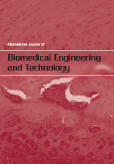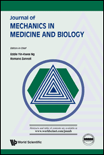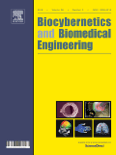
International Journal of Biomedical Engineering and Technology
Scope & Guideline
Pioneering Research in Biomedical Engineering Excellence
Introduction
Aims and Scopes
- Biomedical Imaging and Signal Processing:
Research in this area encompasses techniques for image acquisition, processing, and analysis, particularly using deep learning and machine learning methods to improve diagnostic accuracy and treatment planning. - Wearable and Implantable Medical Devices:
This scope includes the design and development of smart devices for health monitoring, rehabilitation, and disease management, integrating IoT and AI technologies to enhance patient care. - Rehabilitation Engineering:
Focus on the development of devices and systems that assist in the rehabilitation of patients with physical disabilities, including robotics and virtual reality applications. - Diagnostic and Prognostic Tools:
Research aimed at improving diagnostic methods through advanced algorithms and imaging techniques, including the use of AI in predicting disease progression and treatment outcomes. - Biomaterials and Tissue Engineering:
Exploration of new biomaterials for medical applications, focusing on their design, functionality, and integration with biological tissues for applications in regenerative medicine. - Computational Modelling and Simulation:
Utilization of computational methods to model biological systems, enabling better understanding of physiological processes and the development of predictive models for clinical applications.
Trending and Emerging
- Artificial Intelligence and Machine Learning:
There is a clear trend towards the application of AI and machine learning across various biomedical applications, including diagnostics, imaging analysis, and predictive modelling, highlighting the growing importance of these technologies in healthcare. - Telemedicine and Remote Monitoring:
The COVID-19 pandemic has accelerated research in telehealth technologies, including remote patient monitoring systems that utilize wearable sensors and mobile health applications. - Advanced Imaging Techniques:
Emerging techniques in imaging, such as deep learning-enhanced MRI and CT scans, are gaining traction, indicating a shift towards more precise and efficient diagnostic tools. - Robotics in Surgery and Rehabilitation:
The integration of robotics in surgical procedures and rehabilitation therapies is on the rise, showcasing innovation in enhancing surgical precision and patient recovery. - Nanotechnology in Medicine:
Research into the applications of nanotechnology for drug delivery, imaging, and therapeutic interventions is emerging as a significant focus, reflecting advances in material science and engineering.
Declining or Waning
- Traditional Statistical Methods:
The reliance on conventional statistical methods for data analysis in biomedical research appears to be waning, with a notable shift towards machine learning and AI-driven approaches that offer more robust predictive capabilities. - Basic Biomechanics Studies:
Studies focusing on basic biomechanical principles without the integration of advanced technologies such as AI or machine learning are becoming less frequent, as the field increasingly emphasizes interdisciplinary approaches. - Invasive Medical Procedures:
Research centered on invasive techniques is declining as non-invasive and minimally invasive technologies gain traction, reflecting a broader trend towards patient-centered care and improved outcomes.
Similar Journals

Journal of Mechanics in Medicine and Biology
Exploring the Intersection of Mechanics and MedicineThe Journal of Mechanics in Medicine and Biology, published by World Scientific Publishing Co Pte Ltd, serves as a critical platform for interdisciplinary research at the intersection of engineering and biomedical sciences. With an ISSN of 0219-5194 and E-ISSN of 1793-6810, this esteemed journal has been dedicated to exploring the mechanical principles that govern biological systems since its inception in 2008. Based in Singapore, it addresses a diverse range of topics, from biomaterials to biomechanics, contributing valuable insights into the field’s evolving landscape. Although currently positioned in Q4 of Biomedical Engineering according to the 2023 category quartiles, it is poised for growth and increased visibility within the scientific community, fostering innovation and collaboration among researchers, professionals, and students alike. The journal emphasizes the importance of cutting-edge research and its practical implications, making it a vital resource for those striving to enhance the future of medical technologies and biological understanding.

Advanced Biomedical Engineering
Pioneering breakthroughs in biomedical innovation.Advanced Biomedical Engineering is a peer-reviewed open access journal published by the Japanese Society for Medical & Biological Engineering, dedicated to disseminating high-quality research in the multidisciplinary fields of biomedical engineering. Boasting an ISSN of 2187-5219, this journal has been pivotal since its inception in 2018, especially as it embraces the open access model to foster knowledge sharing and wide accessibility. Centered in Tokyo, Japan, it serves as a vital platform for scholars and practitioners across various domains, such as biomaterials, biomedical engineering, and biotechnology. Despite currently residing in the Q4 quartile across several categories, including those in biotechnology and computer science applications, the journal is committed to elevating its academic impact and reputation, aiming for improved rankings in Scopus and other databases. Researchers and professionals are encouraged to contribute their innovative findings, discussions, and case studies, facilitating the advancement of this dynamic field.

Physical and Engineering Sciences in Medicine
Fostering Collaboration for Cutting-Edge Medical SolutionsPhysical and Engineering Sciences in Medicine is an esteemed peer-reviewed journal published by SPRINGER, dedicated to advancing the interdisciplinary fields of biomedical engineering and biophysics. With an ISSN of 2662-4729 and an E-ISSN of 2662-4737, this journal has carved a niche for itself since its inception in 2020. Situated in the Netherlands, it serves as a global platform for innovative research and developments that bridge the physical sciences and engineering with medical applications. The journal boasts a commendable range of quartile categorizations, highlighting its impact in various sectors including Instrumentation (Q1), Radiology (Q2), and Biotechnology (Q2). Its Scopus rankings further emphasize its relevance and quality, placing it in the top 15% in several categories. Being an Open Access title, it promotes the dissemination of knowledge, ensuring that vital research is accessible to all, thereby fostering collaboration among researchers, professionals, and students alike. The journal's objectives include promoting cutting-edge research, enhancing biomedical technology, and addressing complex health challenges through innovative engineering solutions, establishing it as a vital resource in the scientific community.

Progress in Biomedical Engineering
To elevate biomedical solutions for a healthier tomorrow.Progress in Biomedical Engineering, published by IOP Publishing Ltd, is a premier open-access journal that serves as a vital platform for the dissemination of innovative research in the field of biomedical engineering. With an impressive Q1 classification in the Biomedical Engineering category for 2023, this journal has established itself as a significant contributor to the advancement of engineering solutions that improve healthcare outcomes. Recognized for its high-quality and impactful publications, it ranks 51st out of 303 in its field on Scopus, placing it in the 83rd percentile. The journal aims to foster interdisciplinary collaboration and introduce pioneering methodologies and technologies that bridge the gap between engineering and medicine. By providing a pathway for rapid communication of fundamental and applied research, Progress in Biomedical Engineering is dedicated to shaping the future of healthcare technology. Access to its content ensures that researchers, professionals, and students remain at the forefront of biomedical innovation.

Annual Review of Biomedical Engineering
Bridging Engineering Excellence and Medical AdvancementsAnnual Review of Biomedical Engineering, published by Annual Reviews, stands as a leading academic journal dedicated to the rapidly evolving field of biomedical engineering. With an impressive impact factor that reflects its high citation rates and rigorous peer-review process, this journal offers critical insights by synthesizing cutting-edge advancements and applications in both biomedical engineering and miscellaneous medicine. The journal, which is available in both print (ISSN: 1523-9829) and electronic formats (E-ISSN: 1545-4274), serves as an essential resource for researchers, professionals, and students aiming to stay abreast of significant developments and emerging trends. As of 2023, it is recognized in the top tier (Q1) for both Biomedical Engineering and Medicine, showcasing its esteemed position within the academic community, reflected in its high Scopus rankings. Spanning from 1999 to 2024, the Annual Review of Biomedical Engineering continues to catalyze interdisciplinary collaboration and innovation at the intersection of engineering and healthcare.

Wearable Technologies
Transforming Healthcare with Cutting-Edge Wearable ResearchWearable Technologies is an esteemed peer-reviewed journal published by CAMBRIDGE UNIV PRESS, focusing on the innovative intersection of technology and healthcare. Since its establishment in 2020, this Open Access journal has garnered significant recognition in the field of Biomedical Engineering, with a remarkable impact factor reflected in its top-tier rankings—Q1 in Biomedical Engineering and Rehabilitation, and Q2 in Human-Computer Interaction. Positioned as a leader in its domain, Wearable Technologies continually explores the advancements and applications of wearable devices, facilitating groundbreaking research that enhances user interaction and rehabilitation outcomes. With its robust Scopus rankings—including a 92nd percentile in Medicine Rehabilitation—this journal serves as an invaluable resource for researchers, professionals, and students keen on advancing the understanding and application of wearables in various fields. Based in Cambridge, United Kingdom, it aims to stimulate scholarly conversation and disseminate pivotal discoveries that shape the future of both technology and healthcare.

Biomedical Engineering-Biomedizinische Technik
Connecting Ideas, Advancing Practices in Biomedical EngineeringBiomedical Engineering-Biomedizinische Technik, published by WALTER DE GRUYTER GMBH, serves as a pivotal platform for advancing knowledge in the field of biomedical engineering and medicine since its inception in 1956. With an ISSN of 0013-5585 and an E-ISSN of 1862-278X, this peer-reviewed journal offers accessible insights into innovative research and technological advancements that are reshaping healthcare practices and biomedical applications. Although rated in the Q3 category for both Biomedical Engineering and Miscellaneous Medicine in 2023, the journal's impact factor and growing reputation demonstrate its vital role in fostering academic dialogue and collaboration. The journal is based in Germany, while its scope encompasses a diverse range of topics, thus bridging the gap between engineering and medical disciplines. Researchers, professionals, and students alike are encouraged to engage with the content that not only highlights contemporary challenges but also presents groundbreaking solutions in biomedical technology.

Bio-Design and Manufacturing
Innovating Tomorrow's Bio-Manufacturing SolutionsBio-Design and Manufacturing, published by SPRINGER HEIDELBERG, is a pioneering journal that stands at the forefront of innovation in the fields of Biomedical Engineering, Biotechnology, Industrial and Manufacturing Engineering, and Materials Science. With its ISSN 2096-5524 and E-ISSN 2522-8552, this journal has established itself as a leading platform for disseminating cutting-edge research and advancements that merge biological principles with manufacturing processes, emphasizing sustainable and efficient practices. It has garnered recognition in the 2023 category quartiles, boasting a Q1 rank in all its relevant fields, which underscores its significance and impact—evident from its prime Scopus rankings that place it within the top percentiles of numerous engineering and materials science disciplines. Researchers, professionals, and students alike benefit from the wealth of knowledge presented in this journal, making it an essential resource for those seeking to enhance their understanding of bio-design applications and innovation in manufacturing processes.

Biomedical Engineering Letters
Connecting scholars to elevate biomedical engineering.Biomedical Engineering Letters, published by SpringerNature, is a prominent journal in the field of Biomedical Engineering. With a robust ISSN of 2093-9868 and E-ISSN of 2093-985X, this esteemed journal has established itself as a vital resource for researchers and professionals seeking to advance their knowledge and share groundbreaking findings. Recognized for its quality, Biomedical Engineering Letters holds a distinguished ranking in Scopus, positioned at #94/303 (69th percentile) in the Biomedical Engineering category. The journal covers a diverse scope within biomedical engineering, providing an important platform for innovative research from 2011 to 2024 and facilitating the exchange of ideas among scholars. Although it operates under a subscription model, the journal's commitment to enhancing the field makes it an indispensable reference for those engaged in cutting-edge biomedical research in Germany and globally.

Biocybernetics and Biomedical Engineering
Advancing the Frontiers of Biomedical InnovationBiocybernetics and Biomedical Engineering, published by ELSEVIER in the Netherlands, is a prestigious journal that stands at the forefront of the intersecting fields of biomedical engineering and artificial intelligence. With an impressive Impact Factor that places it in the Q1 category for Biomedical Engineering, this journal not only ranks 17th out of 303 in Scopus but also boasts a remarkable percentile ranking of 94th, highlighting its influence and relevance within the scientific community. Since its inception in 2008, Biocybernetics and Biomedical Engineering has aimed to publish cutting-edge research that integrates principles of cybernetics with technological advancements in health care, thereby fostering innovations that improve patient outcomes. Dedicated to advancing knowledge in biomedical technology, the journal serves as a vital resource for researchers, professionals, and students seeking to explore the latest developments and methodologies in the field.